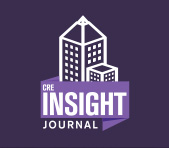A Strategic Guide to Enhancing Your Tenant Care Program in Commercial Real Estate
In commercial real estate, tenant satisfaction isn’t just a value-add—it’s a necessity. Whether you manage an office tower, retail center, or mixed-use development, your ability to retain tenants directly impacts your bottom line. Enhancing your tenant care program is one of the most effective ways to build long-term relationships, drive lease renewals, and attract new tenants through reputation and referrals.
Let’s explore how to elevate your tenant care program through intentional strategies, practical tools, and a culture of service that resonates throughout your property operations.
Why Tenant Care Matters More Than Ever
The modern tenant expects more than just a functional space. They expect a responsive, customer-centric experience. With rising operational costs and competitive leasing markets, property owners and managers must deliver value beyond square footage.
Enhanced tenant care can lead to:
- Higher tenant retention, reducing costly vacancy periods
- Improved operational efficiency, through better communication and proactive maintenance
- Stronger tenant-landlord relationships, which can ease lease renegotiations or expansions
- Increased asset value, as stabilized occupancy attracts investors and improves NOI
Core Pillars of a Strong Tenant Care Program
To improve your tenant care approach, focus on these foundational pillars:
Communication
At the heart of tenant care is clear, consistent, and two-way communication.
- Onboarding Experience: Set the tone from the beginning with a welcome packet, move-in checklist, and an introduction to key property contacts and service procedures.
- Regular Check-Ins: Schedule quarterly or biannual tenant meetings (in-person or virtual) to discuss upcoming property projects, gather feedback, and reinforce your open-door policy.
- Multiple Channels: Offer email, phone, tenant portals, and even text-based platforms to meet different communication preferences.
- Proactive Updates: Notify tenants ahead of time about construction, service interruptions, or events that might affect them.
Responsiveness and Service
- Speed and quality of service influence tenant perception of management effectiveness.
- Service Level Standards: Set internal KPIs for response and resolution times for maintenance tickets.
- Ticketing Systems: Use cloud-based or web-based maintenance request systems with transparent tracking and communication for tenants.
- After-Hours Support: Offer emergency contact numbers and clearly explain procedures for issues outside business hours.
Amenities and Comfort
Modern tenants are looking for workplace environments that enhance productivity, wellness, and morale.
- Shared Amenities: Offer updated lobbies, conference rooms, lounges, wellness rooms, and kitchenettes.
- Tech Upgrades: Provide high-speed Wi-Fi in common areas, smart thermostats, or digital building directories.
- Wellness Features: Introduce nature-loving designed areas, improved air quality, fitness spaces, or outdoor areas to increase tenant satisfaction.
Maintenance and Cleanliness
Your property’s condition reflects your brand and care for tenants.
- Preventive Maintenance: Develop and communicate a schedule to avoid disruptive repairs and demonstrate your long-term commitment.
- Janitorial Oversight: Conduct regular walkthroughs with cleaning vendors to ensure standards are met, especially in high-traffic areas.
- Curb Appeal: Invest in landscaping, seasonal decor, and exterior cleanliness—it sets the first impression every day.
Tenant Engagement and Community
Create a sense of place by fostering community among your tenants.
- Events Calendar: Host tenant appreciation events like holiday parties, food truck days, wellness workshops, or business mixers.
- Surveys and Feedback Loops: Run annual or biannual surveys to understand what’s working and where improvements are needed.
- Digital Newsletters: Highlight property updates, tenant news, and upcoming events to strengthen the tenant community.
Implementing Technology to Streamline Tenant Care
The right tools can make tenant care more efficient, measurable, and scalable.
- Tenant Portals: Allow tenants to submit work orders, view building updates, book amenities, and communicate with management.
- Building Apps: Mobile apps can centralize communication, access control, and even parking or package notifications.
- Data Dashboards: Monitor service ticket metrics, HVAC usage, space utilization, or foot traffic for informed decision-making.
- Visitor Management: Tech-based systems streamline guest check-ins, improving both security and user experience.
By leveraging technology, managers can focus more on relationships and less on paperwork.
Personalization: Going Beyond the Basics
One-size-fits-all doesn’t apply to tenant care anymore. The most successful programs tailor services and experiences to each tenant’s needs.
- Custom Onboarding: For new tenants, customize welcome kits with branded gifts, contact info, and an introduction to building culture.
- Lease Milestone Recognition: Celebrate anniversaries with small gestures like handwritten notes, coffee cards, sweet treats or upgraded amenities.
- Tenant Profiles: Maintain internal notes about each tenant’s industry, operating hours, and preferences to anticipate needs.
- Flexibility: Be open to accommodating special requests, such as after-hours access or event space usage, when possible.
This personal touch helps tenants feel like partners—not just occupants.
Elevating the Role of Property Management Staff
The frontline team is crucial to the tenant experience. Invest in your staff and empower them to deliver high-quality care.
- Customer Service Training: Provide regular training focused on empathy, conflict resolution, and communication.
- Authority to Act: Equip staff with the tools and autonomy to resolve minor issues without delays.
- Visibility: Encourage regular walkthroughs and check-ins to stay visible and build rapport with tenants.
- Recognition and Feedback: Celebrate team wins and regularly collect tenant feedback about staff performance.
A motivated, professional team is your most valuable tenant care asset.
Crisis Management and Transparency
Tenant care is especially tested during crises—be it a pandemic, a natural disaster, or major building repairs.
- Clear Protocols: Have an emergency communication plan ready, and walk tenants through it during onboarding.
- Real-Time Updates: Use text alerts, email blasts, and signage to keep everyone informed during disruptions.
- Post-Crisis Reviews: After the situation stabilizes, debrief with your team and tenants to understand what worked and what could improve.
Being calm, organized, and transparent under pressure will build trust and loyalty.
Measuring Success and Continuously Improving
What gets measured, gets managed. Track and analyze the effectiveness of your tenant care program.
Key Metrics:
- Response and resolution times for service requests
- Tenant satisfaction survey scores
- Retention and renewal rates
- Engagement levels at tenant events
Annual Reviews: Set time aside to review program performance, vendor service levels, and tenant feedback. This can be accomplished through the issuance of Kingsley surveys.
Continuous Feedback: Invite tenants to submit suggestions any time—open feedback channels show that you care year-round.
Make improvements based on data, not assumptions.
Budgeting for Tenant Care
Great tenant care doesn’t require extravagant spending—it requires intentional investment.
- Allocate Funds: Set aside budget specifically for tenant engagement, events, amenities, and emergency response kits.
- CapEx Planning: Consider longer-term investments like lobby renovations or HVAC upgrades that directly affect tenant experience.
- Partner with Vendors: Collaborate with service providers to enhance offerings—cleaning companies, fitness providers, and food vendors can all elevate your tenant program.
Even small investments can make a big impression when done thoughtfully.
In commercial real estate, tenant experience is the most direct way to increase property value, reduce turnover, and stand out in a crowded market. Enhancing your tenant care program requires more than reactive service—it demands a proactive, strategic approach rooted in communication, personalization, and service excellence.
By investing in relationships, technology, and continuous improvement, you’re not just managing a building—you’re cultivating a community. And that community is the cornerstone of long-term success in commercial real estate.
To stay up to date on news and resources such as this and other topics of importance to the real estate industry, subscribe to the free CRE Insight Journal Newsletter using this link.
Comments are closed.









